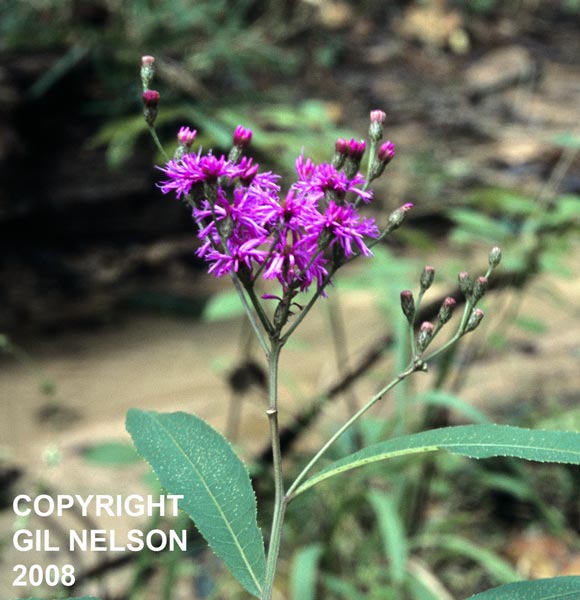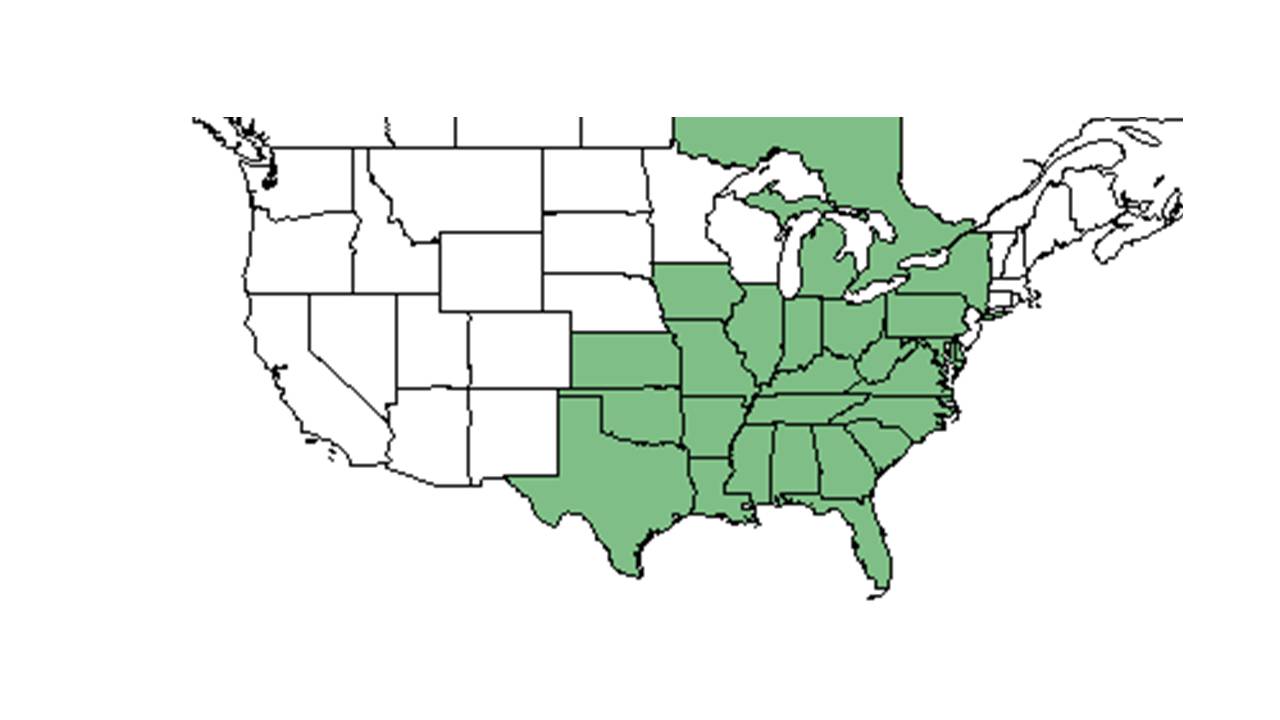Difference between revisions of "Vernonia gigantea"
(→Description) |
KatieMccoy (talk | contribs) |
||
| Line 19: | Line 19: | ||
Common name: giant ironweed | Common name: giant ironweed | ||
| + | ==Taxonomic notes== | ||
==Description== | ==Description== | ||
<!-- Basic life history facts such as annual/perrenial, monoecious/dioecious, root morphology, seed type, etc. --> | <!-- Basic life history facts such as annual/perrenial, monoecious/dioecious, root morphology, seed type, etc. --> | ||
Revision as of 07:27, 15 October 2015
| Vernonia gigantea | |
|---|---|

| |
| Photo taken by Gil Nelson | |
| Scientific classification | |
| Kingdom: | Plantae |
| Division: | Magnoliophyta – Flowering plants |
| Class: | Magnoliopsida – Dicotyledons |
| Order: | Asterales |
| Family: | Asteraceae ⁄ Compositae |
| Genus: | Vernonia |
| Species: | V. gigantea |
| Binomial name | |
| Vernonia gigantea (Walter) Trel. | |

| |
| Natural range of Vernonia gigantea from USDA NRCS Plants Database. | |
Common name: giant ironweed
Contents
Taxonomic notes
Description
A description of Vernonia gigantea is provided in The Flora of North America.
Distribution
Ecology
Habitat
It can be found in disturbed successional areas (Emery et al 2011). It is commonly found in lowland forest habitats (Emery et al 2011).
Phenology
Seed dispersal
Seed bank and germination
It seems that heating at low temperatures stimulates germination in V. gigantea. It had a 3% average germination rate under control (25 degrees Celsius) conditions, but slightly higher rates when exposed to direct flame (Emery et al 2011).
Fire ecology
It seems to thrive after low-intensity fires (Emery et al 2011).
Pollination
Use by animals
Diseases and parasites
Conservation and Management
Cultivation and restoration
Photo Gallery
References and notes
Emery, S. M., J. Uwimbabazi, et al. (2011). "Fire intensity effects on seed germination of native and invasive Eastern deciduous forest understory plants." Forest Ecology and Management 261: 1401-1408.